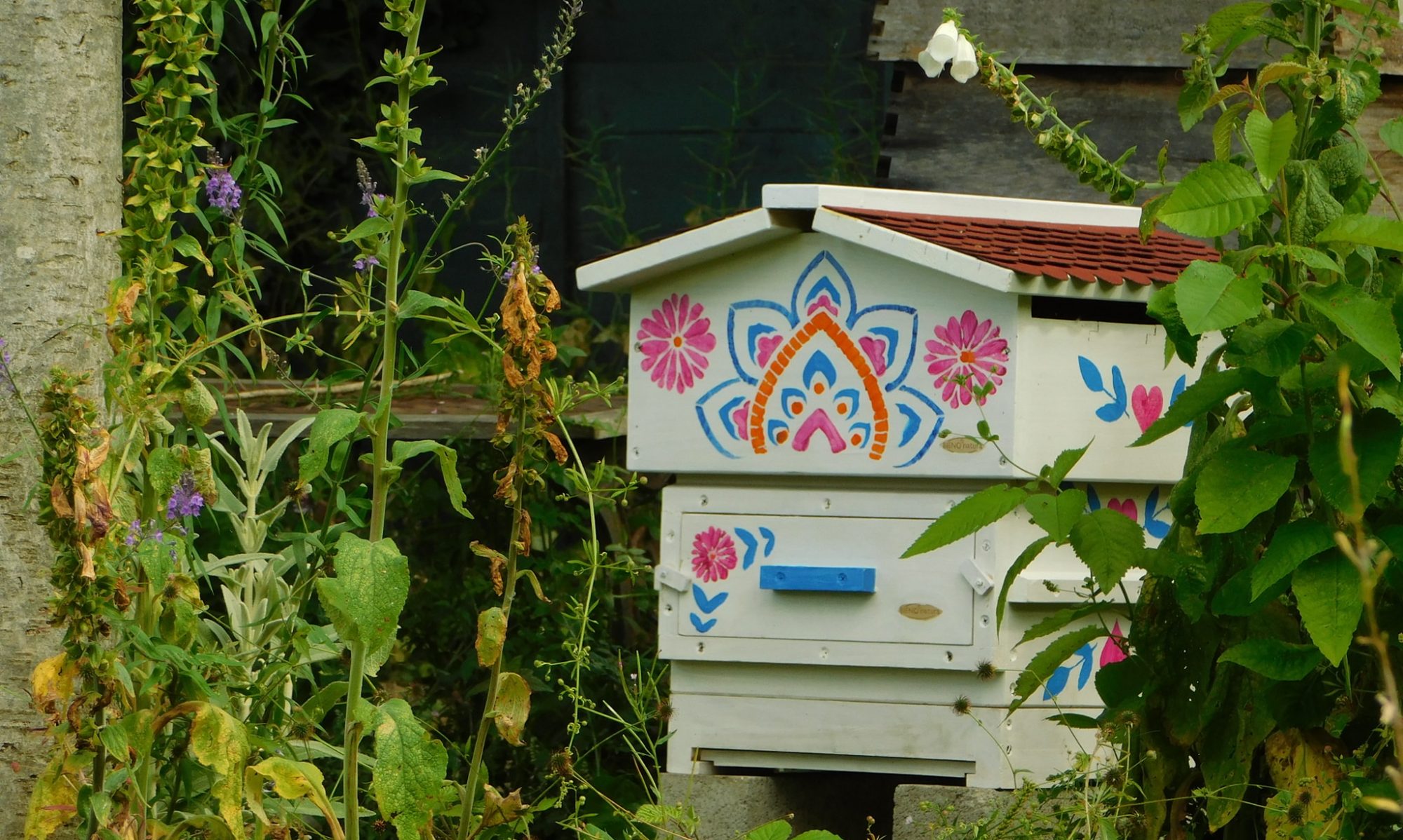The colony we rescued was quite small-probably a secondary swarm. Its queen will be very young. The old queen would have led an earlier much larger swarm.
The negative is that the colony might need a bit of help to build up enough to survive the winter. So I needed to feed it. In conventional beekeeping it is usual to feed with sugar syrup but the best food for bees is honey which is preferred in natural beekeeping.
My very strong and healthy WBC colony was in need of more space and more work to do, so I decided that I would use it to produce some food for the warre.

With some scraps of mdf we reduced the internal measurements of a WBC box to take 8 warre frames and put this on the top of the WBC hive.
By the end of July we were able to harvest these beautifully filled and capped warre frames from the WBC.

We put these on top of the existing warre box .

What we know now that we didn’t at the time is that we were due to get some quite severe weather which has severely curtailed the ability of this small colony to forage for itself.




 Inside, there are 8 evenly spaced top bars. Instead of sheets of foundation it is usual to fit homemade wax starter strips to these bars to encourage the bees to build their natural naan-shaped combs vertically.
Inside, there are 8 evenly spaced top bars. Instead of sheets of foundation it is usual to fit homemade wax starter strips to these bars to encourage the bees to build their natural naan-shaped combs vertically.